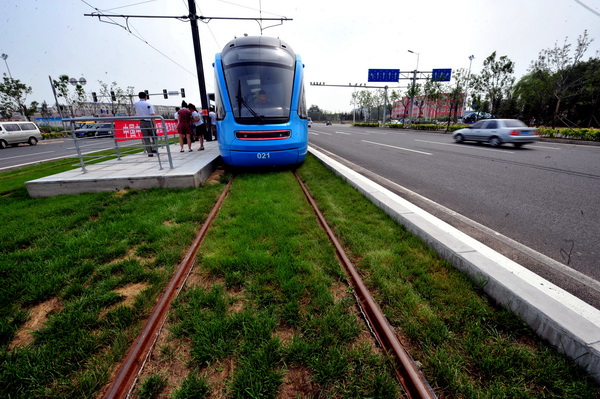

Highlights from the EO print edition, No. 633, Aug 19, 2013
The Hidden Perils of Lending to Major SOEs
News, page 1
~ Critics often say that China's economic model is structured in such a way that loans and financing flow to large state-backed firms at the expense of smaller private firms. However, a recent case that left dozens of banks hanging seems to be a warning that lenders might need to reassess the risks involved with lending to state-backed firms.
~ The case in question began when a subsidiary of a huge state-owned group that operates under the State-owned Assets Supervision (SASAC) was transferred to another centrally-administered SOE.
~ In the first half of the year MCC Paper Yinhe Co., Ltd. (中冶纸业银河有限公司) was the biggest tax payer in the county of Shandong where it is based. A few months later, after being taken off the books of one SOE and being made a subsidiary of another state-owned conglomerate, the company is said to be seeking bankruptcy. The EO has learned that the parent of the pulp and paper making company has over ten billion yuan in outstanding loans from dozens of banks on its books and that these financial institutions have banded together to lobby authorities in a bid to limit their losses.
~ MCC Paper Group Co., Ltd. (中冶纸业银河有限公司) is one of China's dominant paper manufacturing companies. In 2012, it ranked 280th among the world's Fortune 500 companies.
~ In March this year, in a move overseen by the regulator that supervises China's major state-owned companies, MCC was moved off the books of China Metallurgical Group Corporation (中国冶金科工集团有限公司), a powerful centrally-administered state-owned enterprise, to become a subsidiary of China Chengtong (中国诚通控股集团有限公司), a large diversified state-owned group that also operates under the supervision of SASAC.
~ The transaction was conducted at no cost. Yinhe Paper, which is based in Shandong and employs about 6,000 people, is one of the subsidiaries of MCC Paper that was caught up in the transfer of assets.
~ At the time that ownership of the company was transferred, MCC Paper together with its subsidiaries had accumulated over 13 billion yuan in outstanding loans to 29 banks and 4 other financial institutions. After China Chengtong took control of the paper company, MCC Paper and all of its subsidiaries stopped most of the interest payments on the debts that remained outstanding. China Chengtong has said that it hasn't had the time to fully evaluate all the demands on MCC Paper and its subsidiaries.
~ The Beijing Banking Association (北京市银行业协会) threatened to release a warning letter to other financial institutions telling them to be careful about extending new loans to these companies. In reply, China Chengtong sent a letter to the Beijing Banking Association seeking help to solve the debt problem. Towards the end of July, the Beijing Banking Association organized a meeting of all the company's creditors which was aimed at pressing China Chengtong and MCC Paper to repay their debts on time. Xu Zhenyi (徐震亦), the chief accountant at China Chengtong, also attended the meeting.
~ A department head from Beijing Rural Commercial Bank (北京农商行) told the meeting that "the situation is very bad.” The view that banks could lend to a centrally-administered SOE (without risk) has already radically changed. According to other reports, in order to limit potential losses, some banks have already told employees not to issue new loans to the major central SOEs.
~ As of this story going to print, there hasn't been any resolution to the problem. Some banks say that as the transfer of company assets was not a market transaction, it's hard for the banks to use market methods to ensure the safety of their assets. Because of this, creditor banks are hoping to get the support of China's banking regulator in order to find a "non-market" solution to the debt problem.
Original article: [Chinese]

Major Pollution Plan Coming Soon
News, page 2
~ In June this year, the State Council issued 10 measures aimed at countering air pollltion. A more detailed plan that outlines how the country will go about reducing emissions will probably be released later this month and is attracting a lot of attention.
~ The EO has learned that the plan will include tough measures aimed at combatting air pollution, especially reducing the levels of small particulate matter that is in the air (which is measured by the PM 2.5 index). The plan will also include specific targets in relation to reducing coal consumption and removing old and polluting factories.
~ The EO learned that the plan will require governments in the region that encompasses Beijing, Tianjin and Hebei to decrease PM 2.5 concentration by 25 percent before 2017. This represents a tripling of the target set for the 12th Five-year Plan (which cover the period from 2011-2015), which requires a 7 percent decrease by 2015.
~ In terms of getting rid of outdated and polluting factories, the plan will focus on steel, cement and glass production and include specific targets.
~ There will be a cap on total coal usage and a target for the proportion of energy produced by burning coal. By 2017, the state aims to reduce the country's reliance on coal for total primary energy consumption from the current 70 percent to 65 percent.
Original article: [Chinese]

Pension Management Plan to be Unveiled This Year
News, page 3
~ According to the State Council, the Ministry of Human Resources and Social Security (MOHRSS) has made major progress in drafting a national plan for the management of pension funds. The plan is expected to be unveiled this year and be implemented sometime next year.
~ By the end of 2015, pension funds will be managed at the national, rather than local level. This will allow the central government to shift funds among provinces.
~ Relatively developed regions like Guangdong, Beijing, Shanghai and Zhejiang, have surpluses that are growing every year. However, most western and central provinces must divert funding from other areas in order to make up for their pension deficits. In 2011, for instance, the surplus in Guangdong reached 360 billion yuan while the deficit in Heilongjiang was 18.3 billion yuan.
~ Experts predict that if the plan is carried out as promised, pension funds will be more efficiently utilized.
Original article: [Chinese]

NDRC: No 4 Trillion Yuan Investment in Urban Rail Projects
News, page 6
~ An official from the Infrastructure Office of the National Development and Reform Commission (NDRC) has told the EO that recent reports about 4 trillion yuan being invested in developing 6,000 kilometers of subway and light rail lines in various Chinese cities over the coming 7 years are wrong.
~ A recent decision to delegate responsibility for approving such transportation projects to the provincial level, led some to conclude that a huge investment boom was about to be unleashed. However, the NDRC official told the EO, that although responsibility for approving new projects has indeed been delegated to lower levels, when it comes to the specific details of each project, these provinces will still have to operate according to national-level guidelines.
~ According to what the NDRC official told the EO, the 6,000 kilometer figure was just an earlier forecast of how much might be built.
~ The NDRC is also considering policy options in terms of how it can increase supervision in order to avert any unreasonable investment in urban rail projects following the delegation of responsibility for project approvals.
Original article: [Chinese]

20 Billion Yuan in Fine Revenue Slows One Child Policy Reform
Nation, page 9
~ Each year, people who have more children than they're allowed by China's family planning policy pay an estimated 20 billion yuan in fines. The potential loss of the government revenue these fines bring is said to be a major barrier to reform of the "One Child" Policy.
~ Under current regulations, both husband and wife must have been the only child in their family if they wish to have a second child without paying a fine. The proposed reform would extend this to allow couples a second child as long as at least one of them was the only child in their family. It would be a major step in relaxing the 34-year-old family planning regulations.
~ However, the reform has run into opposition. Lu Jiehua (陆杰华), a professor from Peking University, says that a few policymakers are concerned about the potential of a baby boom resulting from the reform. This could result in a drop in per capita GDP figures, they say. Other provincial officials worry that China's environment, urbanization, employment and social services would all suffer.
~ However, the biggest barrier seems to come from interest groups. It's estimated that 20 billion yuan is collected in fines each year. These fines are a significant source of income for family planning departments. According to personnel statistics, 508,713 people were employed across the country by the National Population and Family Planning Commission system as of Dec 31, 2005. Of these, 104,753 were civil servants. That year the family planning system also spent about 81.3 billion yuan.
Original article: [Chinese]

